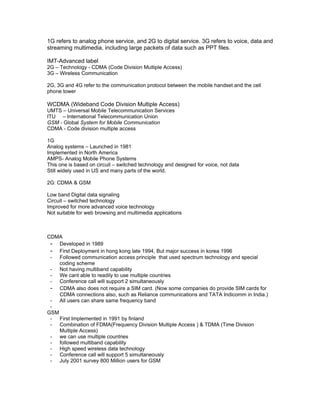1G refers to analog cellular networks, while 2G and 3G refer to digital cellular networks providing improved voice quality and additional data capabilities. 2G networks such as CDMA and GSM were the first digital networks, providing low-speed data, while 3G networks such as WCDMA combined GSM and CDMA to offer higher speeds and support for multimedia applications. 4G networks such as LTE further increased speeds and were designed specifically for high-speed data and IP connectivity.

